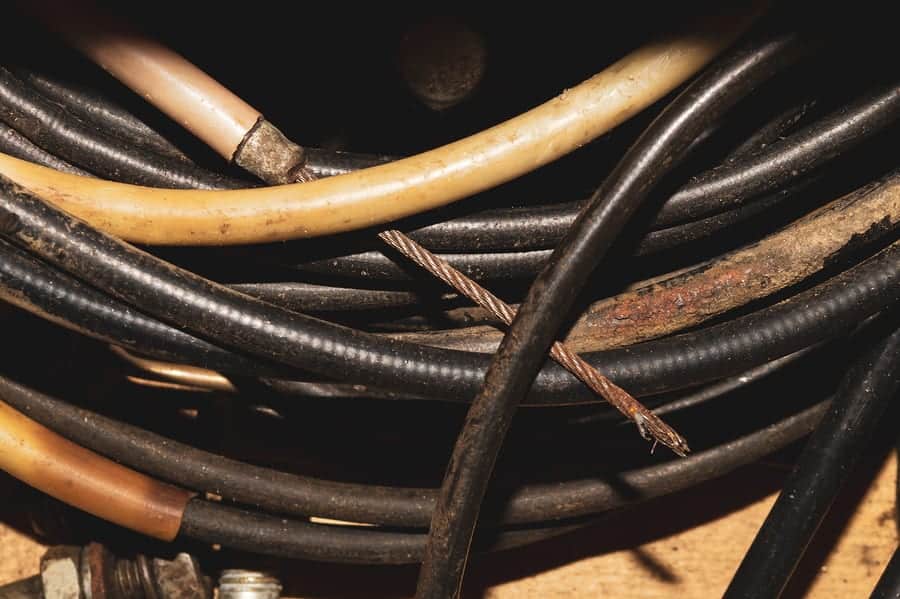
Causes and Mitigation of Corrosion on Buried Copper
Everyone, at sometime in their life has probably found an old penny on the ground and picked it up. Unless you are lucky enough to find a 1943 penny, it was made of between 88% and 95% copper. When the dirt and grime were washed off the penny was a dull reddish-brown color. But if you used an acidic solution to clean the penny, it became a bright shinny coin. Copper conductors and electrodes are much like that penny, when exposed to the air, or buried in the soil, they turn reddish-brown. This is a thin coating that protects the copper in the penny from corroding. Every once in a while, you will find a penny that has been damaged by the soil. You may know it is a penny but, you can’t see Lincoln at all.
Introduction
Copper is usually immune to the effects of corrosion caused by contact with most soils. This is because a naturally protective reddish-brown (cuprous oxide) coating forms on copper. In most soil conditions, this protective coating remains in tact or, if damaged, is easily regenerated.
However, the following conditions will destroy this coating and prevent it from regenerating [1]:
Soils With a High Sulfate or Chloride Content
- A combination of elevated sulfides and chlorides
- Very low soil resistivity in the ranges of 100 to 500 ohm-cm
- High quantities of organic matter (organic acids)
- Moist cinder fills (galvanic action created by carbon particles)
- Soils containing appreciable amounts of ammonia
Electrochemical Concentration Cells
The surface of copper in contact with elevated oxygen contact will be cathodic relative to that in contact with lower oxygen. The underside of buried copper will usually corrode more than the rest of the copper. This is partly caused by the underside being in contact with compacted (undisturbed) oxygen poor soil while the rest is in contact with less compacted (disturbed) oxygen rich soil.
There is some validity in the belief that the metal surface in contact with a lower pH will be cathodic relative to the metal surface in contact with a higher pH soil. This is supported by the fact that there is a more positive potential on metal in a lower pH soil than that of metal in soil having a higher pH soil.
Electrical Current Action
Both Alternating Current (AC) and Direct Current (DC) cause corrosion. It is not the flow of current through the copper that causes the corrosion, it is the current that leaves the copper and flows into the soil. Eventually, the current must leave the copper, return to the earth and flow to the source of generation. It is proven that DC is more detrimental than AC, as AC creates a cathodic effect on the copper on one half cycle and an anodic effect on the other half cycle. DC always has an anodic effect on the copper.
Mitigation
To mitigate the corrosive effects of the soil, VFC and Lyncole recommend the conductors be encased in a column of Lyncole Grounding Gravel® and the electrodes be encased in a Lynconite II® slurry. These backfills comprised of enhanced natural clay that when mixed with water, create an alkali barrier with minimal sulfates and chlorides between the natural soil and the copper.
Lynconite II and Lyncole Grounding Gravel (NSF60 products) will minimize/negate the effects of all the aforementioned conditions. By being low in sulfates and chlorides, this slurry will insulate the copper from those chemicals found in the surrounding soils.
Lynconite II slurry is approximately 60 ohm-cm and the Lyncole Grounding Gravel is approximately 240 Ohm-cm. While this is in the low resistivity range, this low resistivity is not achieved by the presence of organic acids, carbon particles, or ammonia.
As all the copper components will be completely encased, there will be no transition points between dissimilar soils (oxygen rich/oxygen poor, low pH/High Ph).
Lynconite II® and Lyncole Grounding Gravel® have an average pH of approximately 9. This indicates that it is more alkaline than most natural soils. It has been proven that the more acidic the soil, the more corrosive it is. In the grading scale of pH, as the number increases by one, the pH level increases by a magnitude of ten. With a value of 7 being neutral (neither acidic or alkali.) Lynconite II and Lyncole Grounding Gravel have a pH of 9 indicates that it protects the copper from the most acidic soil.
Conclusion
Critical to the evaluation of corrosion potential for any backfill material or soil, is the knowledge of the amount of air that can penetrate the medium. This is because for corrosion to occur, oxygen atoms must be present. With the exception of dense clay (mineral) soil materials, all soils are quite porous to air, so oxygen is always present. Lyncole Grounding Gravel and Lynconite II create a barrier to both water and air penetration that has both extremely low permeability and high alkalinity. This rapidly creates an anoxic condition which stops the formation of corrosion products. As a result, regardless of chemical makeup, these two backfill materials will far exceed any soils in their ability to limit corrosion of copper. To learn more about what VFC can do to prevent corrosion of your buried copper, check out our Grounding Solutions page or contact us today for more information.